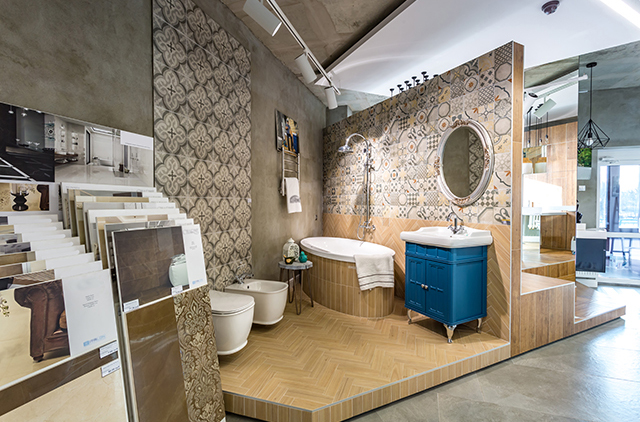Market to hit $1.3bn on tourism thrust
The GCC’s sanitary ware market is expected to see healthy growth and surge to $1.3 billion by 2032, driven by tourism and infrastructure projects, and the region’s sustainability focus, according to a report by Allied Market Research.
01 February 2024
The GCC sanitary ware market is set to expand at a healthy 6.4 per cent compound annual growth rate (CAGR) from 2023 to 2032, reaching $1.3 billion by the end of the forecast period, according to a new report by Allied Market Research. This growth is driven by a confluence of factors, including booming tourism, ambitious infrastructure projects, and a rising focus on sustainability within the region.
According to the report, the GCC sanitary ware market was valued at $712.5 million in 2022.
Allied Market Research, a full-service market research and business-consulting wing of the US-based Allied Analytics, indicates that the region will witness a higher growth rate than the global market, which is anticipated to increase at a CAGR of 6.1 per cent from 2023 to 2032. The global sanitary ware market size, which was valued at $9 billion in 2022, is projected to reach $15.9 billion by 2032.
The GCC’s booming tourism industry is a major driver of demand for high-quality and aesthetically pleasing sanitaryware, says the report. Hotels, resorts, and leisure facilities all require modern and aesthetic fixtures to meet the expectations of visitors and enhance their overall experience.
This growth is also fuelled by rapid urbanisation and infrastructure projects as well as the need for renovation and retrofitting, with the market increasingly demanding water-efficient systems for the numerous luxury developments.
The GCC sanitary ware market includes both bathroom and kitchen fixtures, including fixtures such as water closets, wash basins, pedestals and cisterns.
The bathroom segment, which held the highest market share in 2022, accounting for more than two-thirds of the revenue, is estimated to maintain its leadership position throughout the forecast period. Bathroom trends in the GCC sanitary ware market emphasise water-saving and eco-friendly fixtures, reflecting the region’s water conservation efforts. In the kitchens segment, consumers are seeking innovative and stylish ware such as sinks and faucets that enhance both the aesthetics and functionality of kitchen spaces.
The GCC nations are channelling substantial funds into infrastructure development, including residential, commercial, and public projects. This has led to a growing need for high-quality sanitary ware products such as toilets, sinks, and faucets to equip new buildings and facilities.
Luxury Ceramics Hold Sway
In the materials segment, ceramics currently dominates the market – accounting for over two-thirds of revenue – and is expected to continue to do so over the forecast period. This demand for premium ceramic products is driven by the region’s growing luxury developments which often require high-end, aesthetically pleasing sanitary ware, and ceramics provide a perfect blend of functionality and design.
However, the acrylic plastics and Perspex segment is projected to witness the highest CAGR of 7.4 per cent from 2023 to 2032. Increase in use of acrylic and Perspex for manufacturing bathtubs, sinks, and other fixtures due to their aesthetic appeal and suitability for luxury developments drives the demand for this segment in the GCC sanitary ware market, says the report.
Water closets remain the leading product type, accounting for nearly one-third of the GCC sanitary ware market revenue. Increase in demand for water-saving and sustainable wash basins has boosted the market demand for this segment. Low-flow and dual-flush models have gained popularity due to the region’s focus on water efficiency. However, pedestals are catching up, fuelled by space constraints in modern bathrooms.
Residential dominates
The residential sector currently accounts for over half of the market, reflecting the region’s ongoing housing boom and homeowners’ focus on eco-friendly sanitary ware products. However, the commercial segment is projected to grow at a faster rate, as hotels, restaurants, and other public spaces upgrade their sanitary facilities with water-efficient and sustainable fixtures.
Smart Bathroom Trend Emerges
Consumers are increasingly seeking smart bathroom accessories, including sensor-activated faucets, self-cleaning toilets, and intelligent shower systems. These features often connect to smartphones, offering greater convenience and control.
Looking Ahead
The GCC sanitary ware market is expected to remain buoyant in the coming years, supported by robust economic growth, increasing urbanisation, and a growing focus on sustainability. With smart technology and innovative materials gaining traction, the market is poised for further evolution and diversification.
- Market to hit $1.3bn on tourism thrust
- 150 years of growth, innovation
- Spanish tiles make inroads in region
- Hansgrohe highlights sustainability focus
- Duravit unveils showers for ‘oasis of relaxation’



